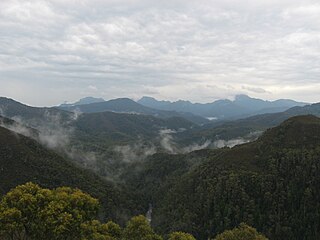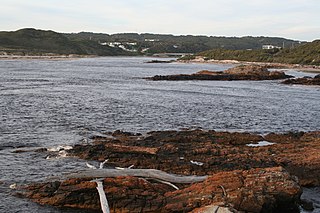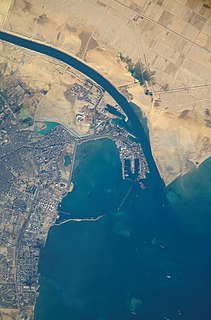
Mount Ossa is the highest mountain in Tasmania with a summit elevation of 1,617 metres (5,305 ft) above sea level. It makes up part of the Pelion Range within Cradle Mountain-Lake St Clair National Park in the Central Highlands region of Tasmania, Australia.

The Huon River is a perennial river located in the south-west and south-east regions of Tasmania, Australia. At 174 kilometres (108 mi) in length, the Huon River is the fifth-longest in the state, with its course flowing east through the fertile Huon Valley and emptying into the D'Entrecasteaux Channel, before flowing into the Tasman Sea.

John Helder Wedge was a surveyor, explorer and politician in Van Diemen's Land.

Frankland is a small town in the Great Southern Region of Western Australia. The town is in the shire of Cranbrook and is situated approximately 360 km from the State's capital, Perth, approximately 120 km north west of Albany, 83 km southwest of Kojonup, 19 km north of Rocky Gully and 90 km east of Manjimup. Frankland derives its name from its location 6 km east of the Frankland River. At the 2006 census, Frankland had a population of 380.

The Frankland River is a river in the Great Southern region of Western Australia. The Frankland River is the largest river by volume in the region and the eighth largest in the state. The traditional owners of the area are the Noongar people who know the river as Kwakoorillup.

The Davey River is a perennial river located in the south-west region of Tasmania, Australia.

Mount Anne is a mountain located in the Southwest National Park in south-west region of Tasmania, Australia. The mountain lies within the UNESCO World Heritage-listed Tasmanian Wilderness.

The Serpentine River is a major perennial river located in the south-west and western regions of Tasmania, Australia.

The Scotts Peak Dam Road is the most southerly point of road access into the south western region of Tasmania, Australia.

The Serpentine Dam is a rockfill embankment dam with a concrete face and a controlled spillway across the Serpentine River, located in the South West region of Tasmania, Australia.

The Frankland Range is a mountain range that is located in the south-west region of Tasmania, Australia. The range forms part of a natural south-western border to the impounded Lake Pedder, formed by the damming of the Serpentine and Huon rivers.

The Gordon River is a river in the Great Southern region of Western Australia.

The Arthur – Pieman Conservation Area (APCA) stretches along the north-west coast of Tasmania, Australia and covers over 1,030 square kilometres (400 sq mi). Much of the reserve is between the Arthur River in the north, the Pieman River in the south and the Frankland and Donaldson Rivers to the east. It is a dynamic landscape which is being continually reshaped by wind, fire and water.
James Goodwin was a convict escapee and explorer in Van Diemen's Land. In March 1828, he escaped from the notorious Sarah Island prison with fellow convict, Thomas Connolly and the two were the first white men to pass through the Lake St Clair region. Assuming Goodwin was then taken on to Hobart, he is the first white man to have traversed Tasmania from west to east.

The Arthur River is a major perennial river located in the north-west region of Tasmania, Australia.
Frankland River may refer to:

The Calder River is a river in North West Tasmania, Australia, it extends approximately 15 kilometres (9.3 mi) from the Campbell Ranges near Henrietta before reaching its confluence with the Inglis River near Calder. The river is transversed by the Murchison Highway in its upper reaches. Part of the course of the river is located adjacent to the 65.21-hectare (161.1-acre) Calder River Conservation Area.
















